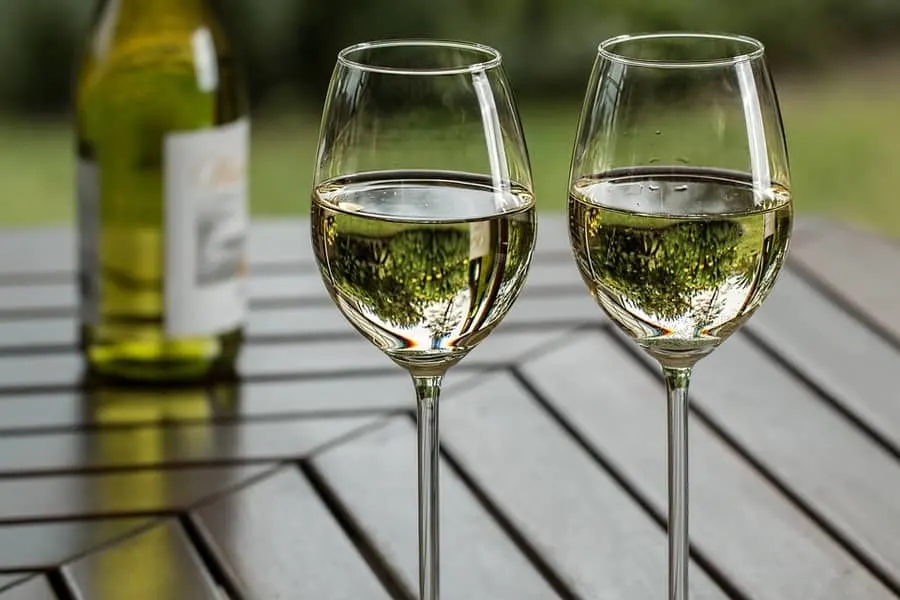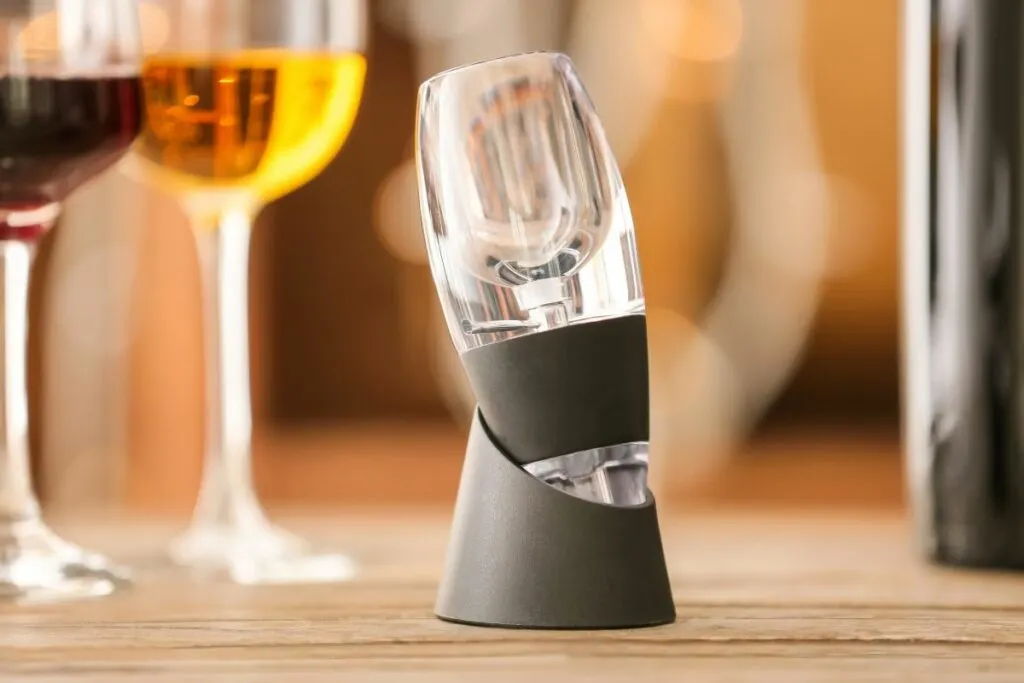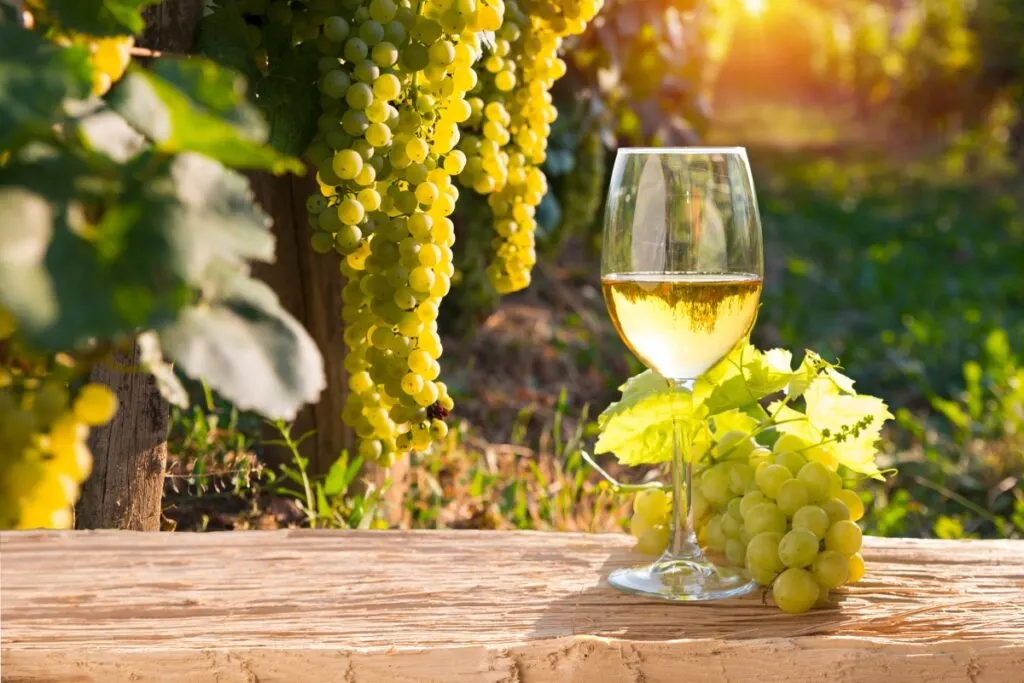As an Amazon Associate, I earn from qualifying purchases with no additional costs for you.
Wine aerators are useful tools for bringing out the flavor in red wine, but have you considered using an aerator for your white wine? Not all white wines need aeration, and it’s crucial to understand which wines need a blast of fresh air and which do not.
Should you use a wine aerator for white wine? A wine aerator will improve the flavor of wines like Alsace, white Bordeaux, and Corton Charlemagne. A decanter allows the wine to breathe, but an aerator is a better option. Using a decanter can take from thirty minutes to several hours, but the aerator works instantly, keeping the wine cold.
Decanting wine is technically done for the purpose of separating clear wine from sediment in the bottle. By default, decanting will also do some aerating. Many older red wines “throw sediment” as they age and, if allowed to remain in the bottle, would taste astringent and have a very unpleasant mouthfeel.
Aerators quicken the essential breathing process and allow you to enjoy the authentic flavors and aromas of your wine in a single glass. Using a decanter requires a full bottle, and its lengthy breathing process may test your patience.
After examining which whites to aerate, the process and benefits of aeration, the debate among experts, and the importance of personal preference, you can experiment with your favorite bottle of white wine.

TIP: If you want to check out the best refrigerator for wine storage, I recommend trying out the Avation (18 bottles) compressor refrigerator with Wi-fi smart app control cooling system. You can find this refrigerator by clicking here (Amazon link).
Process and Benefits of Aerating Wine
Did you know that aeration begins when you open a bottle of wine? When you introduce air into the wine, its chemical composition changes.
Pouring the wine, swirling it around in a glass, or using a decanter or aerator allows fresh air to penetrate the wine and begin the processes of oxidation and evaporation.
Oxidation, occurring after the introduction of oxygen, allows you to taste a wine’s full flavor. When wine is bottled, the pleasant tones and harsh compounds remain trapped until the bottle is opened.
For an optimal tasting experience, you want to release the flavors and aromas while allowing the undesirable components to evaporate.
Why You Should Use an Aerator
Why should you use an aerator instead of a decanter if they both produce the same results? A decanter aerates wine much faster than merely opening the bottle, but it’s a slow process that is not ideal for white wines.
Wine aerators accelerate oxidation and evaporation. Instantly, you’ll enjoy a Chardonnay or Pinot Gris in their proper forms. Your wine will remain chilled, and after capping the bottle with a wine-stopper, you can store the bottle in the frig.
Although wine aerators come in a variety of shapes and price ranges, they all work on the same principle. Like your kitchen’s water purifier, aerators filter out the toxins and reserve the pleasant aspects.
If you’re new to the fine art of wine tasting, you may be hesitant to spend a bundle on a new device. Don’t worry. Products, such as this awesome aerator (link to Amazon to see current pricing), provide quality performance for under twenty dollars. The inexpensive aerators attach to the top of the wine bottle and are easy to clean and store.
If you’re an experienced connoisseur, who hosts dinners and tastings for a discerning group of aficionados, you may want to impress your guests with a high-end aerator. For under forty dollars, this electric aerator attaches to the bottle and acts as a wine tap (Amazon link).
It is one of the very best aerators on the market and is available at a great price on Amazon. No pouring is required. You simply push a button, and the device aerates the wine and releases it from an attractive metal spout.
TIP: To learn how to store white wine after opening, check out this article. To discover if wine fridges are only for storing white wine, check out this complete guide.
The Debate Among Experts

Controversy in winemaking and wine tasting is not a new phenomenon. The first evidence of fermenting grapes occurred nearly 9000 years ago, and archeologists date the first vineyard to be around 4000 BC. With such an extensive history, winetasting may seem intimidating.
Several factors affect the crafting of wine, including temperature, elevation, soil conditions, and humidity. Connoisseurs have argued over the optimal conditions and locations of winemaking for centuries, but recently, the debate has focused on the use of wine aerators for white wine.
Because of the low tannic quality of whites, many believe that only reds need aeration. Others insist that the robust varieties of white wine, like the ones mentioned previously, are vastly improved by an aerator.
Most agree that wine less than ten years old unless it’s a low-end variety purchased at a convenience store, improves with aeration.
TIP: For a complete breakdown of how to store wine long-term in 8 simple steps, read this guide. Can you decant wine without using a decanter? Find out here.
White Wines to Aerate
White wines that share similar characteristics with bold red wines benefit the most from aerating. These whites are denser, darker in color, and contain tannins like younger reds. All wine contains tannins, but the levels in white wines are far less than those in red.
The lower levels of tannins in white wines lead many to believe that an aerator is unnecessary. Red wines have higher levels due to their fermentation process. Winemakers macerate the seeds, stems, and skins when producing red wine.
When making white wine, only the juice ferments in barrels. However, the barrels, notably the ones constructed with oak, contain tannins that leach into the wine. If you’ve noticed that some whites are particularly oaky, you’ve experienced barrel tannins.
The age of the wine is an essential factor when determining whether to use an aerator. Wines less than ten years old are ideal for wine aerators, but expensive, older whites should not be aerated.
The subtle flavors, enhanced by a longer aging process, of older whites decrease when using an aerator. The French vineyards of Alsace, Bordeaux, and Corton-Charlemagne produce styles of white wines worthy of an aerator.
Recommendation box: Everything you need to enjoy your wine as much as possible. All recommended products are personally tested and regularly used by experts from this website (Amazon links):
> Ivation Wine Cooler – Energy-efficient wine cooler for 18 bottles with Wi-fi smart app control cooling system.
> Wine Rack – Beautiful, elegant wood rack for up to 7 bottles and the choice of vertical or horizontal storage.
> Durand Wine Opener – Classic vintage wine opener (we like all these classic staff).
> YouYah Iceberg Wine Decanter – The most beautiful and handy wine decanter we personally use.
> Bormioli Rocco Wine Glasses – A set of eight elegant and traditional wine glasses made in Italy.
> Vintorio Wine Aerator – Simple but really useful wine aerator for a reasonable price.
> The Original Vacu Vin Wine Saver – The best wine saver on the market in a package with two vacuum stoppers and two wine servers.
And if you want to become a true connoisseur of wine, we recommend reading the book Wine Folly: The Essential Guide to Wine (Amazon link), where you will find all the information you need about winemaking, wine varieties, flavors, and much more.
Alsace Region
Located in Northeastern France, Alsace is famous for its Germanic-styled white wines. The vineyards lie near the edge of the Vosges mountains west of the Rhine River.
The area is unique, compared to other French regions, because of its style of winemaking. The influence of neighboring Germany allows winemakers to produce varieties unlike any in France.
Some examples of Alsatian whites are:
- Pinot Gris
- Riesling
- Gewurztraminer
- Muscat
- Sylvaner
Bordeaux Region
Although the Bordeaux region primarily focuses on red wine production, its white wines are no less impressive. Located in Southwest France, the Bordeaux region produces both dry and sweet varieties of white wine. Here are some examples:
- Sauvignon Blanc
- Sauvignon Gris
- Muscadelle
- Semillon
Corton-Charlemagne
Situated on a sloping hill in the Burgundy region of France, Corton-Charlemagne wines benefit from a colder climate. Like the Bordeaux region, Burgundy is better known for its red varieties.
Corton-Charlemagne, named after Emperor Charlemagne, produces young and aged white wines. Winemakers of the sub-region only use Chardonnay grapes. These Chardonnays are highly aromatic and allowed to mature longer.
The younger whites of the area are ideal for aeration, but the pricey, thirty-year varieties should not be aerated. Once you understand the process and benefits of aerating wine, the question, “Should You use an aerator for white wine?” will seem less daunting.
TIP: This guide to the number of glasses of wine in a carafe is helpful! What are the differences between expensive and cheap wines? Find out here!
The Importance of Personal Preference

Absorbing all the information from critics and winemakers can be exhausting, but the only factor that matters when deciding when to aerate white wine is your personal preference.
Human taste buds, like fingerprints, are unique to the person. Your preferences for aerating wine likely differ from those of a master winemaker or esteemed connoisseur.
If you prefer using an aerator on a $1000 bottle of Chateau Haut Brion Blanc, go ahead. Although that may seem blasphemous to the wine community, your opinion is all that matters. Deciding how to enjoy yourself shouldn’t be an ordeal; it should be fun.
The best way to enjoy wine is to experiment. So, grab your favorite white wines and pour a glass of each through a wine aerator. You’ll quickly learn which wine improves with aeration without wasting an entire bottle.
TIP: Check out this page for a complete list of wine products and accessories I love. You’ll find my recommendations for wine refrigerators, decanters, and aerators and the best place to buy wine online. Click here to see the complete listing.
